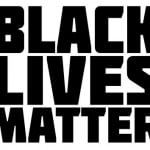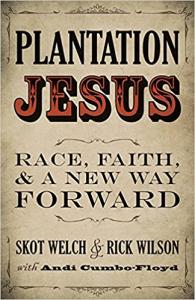Published at KineticsLive.com
By R. Drew Smith, Ph.D.
In 1995, the first of the Left Behind series was published—a hugely successful franchise that dealt in fictionalized enactments of Christian endtimes scenarios. Based upon a Biblical eschatological view that gained popularity by the mid-20th century, these novels depict a radical transformation of society that ensues after the Christian faithful are supernaturally taken out of the world (“raptured”), clearing the way for the rule of the antichrist and the inevitable descent toward apocalypse. Within this desolate context emerges a new cadre of Christian believers, called to costly Christian witness among a population left behind and on the brink.
In late-August 2005, an all too real variation on this theme of worldly desolation played out in New Orleans, as tens of thousands of New Orleanians fled an approaching Category 3 hurricane, leaving behind thousands of their fellow residents too immobilized by poverty or other factors to escape the hurricane’s onslaught.
On August 29, Hurricane Katrina made landfall along the Mississippi and Louisiana coast, packing 125 mph winds and strong waves and producing a storm surge of 10-20 feet. The winds and flooding left New Orleans without power and submerged in as much as 20 feet of water in some areas. The treacherous physical and social circumstances faced by the 10-20 percent of largely black New Orleanians that were unable to evacuate the city visited horror and death upon these residents who stayed behind.
Additional consequences of the storm both for residents who evacuated and for those who remained in the city included inestimable losses in property and livelihoods as well as the permanent displacement of tens of thousands of the city’s black and poor residents.
The massive pre-storm exodus from New Orleans of the more resourceful sectors of the population, and the closing or distancing of most institutional operations, are dynamics reminiscent of the large scale suburban flight, economic divestment, and governmental indifference experienced within many American cities—and especially within the poorer neighborhoods of those cities in the past one hundred years.
Former industrial cities with once sizable populations of blue-collar African-American laborers were among the cities hit hardest by massive downturns in resources, as businesses and corporations relocated to better markets in the suburbs or overseas and as middle-class populations fled urban core neighborhoods for outer-ring or suburban locales. Both of these dynamics contributed to vastly diminished property values, tax revenues, and local urban economies—resulting in fewer resources for public schools, public services, and urban infrastructure.
This exodus of resources from American cities and neighborhoods occurred against the backdrop of an ideological climate emphasizing public sphere fiscal austerity and balanced budgets, which compounded social resource scarcity for those most in need.
What this large-scale flight of social resources left in its wake was not an urban demographic characterized by upward mobility but by severe poverty and social isolation.
Between 1970 and 1990, the percentage of persons living in neighborhoods with a poverty rate of 40 percent or higher grew from 7.8 to 15.8 percent for blacks and from 7.0 to 9.5 percent for Hispanics, and by 2010 the proportion of Americans (irrespective of race) living in high-poverty neighborhoods was 15 percent. Further evidence of the growing social isolation of urban poor populations has been the resegregation of public schools. A 2014 report by The Economic Policy Institute states: “The typical black student now attends a school where only 29 percent of his or her fellow students are white, down from 36 percent in 1980.”
Moreover, as noted in a report by ProPublica, there are a growing number of schools whose white population is 1 percent or less (mostly in the Northeast and Midwest), and roughly 12 percent of black students in the South attend such schools.
The tragic plight of impoverished and immobile New Orleanians forced to ride out Katrina in 2005 also serves as a poignant metaphor of what has been a much larger problem of urban poor populations across the U.S. left to weather storms of resource divestment, ideological hostilities, and social marginalization. And as was true in New Orleans during Katrina, where those left behind were almost completely devoid of institutional support on which to lean, the urban poor in various contexts have suffered from what has also been a scarcity of institutional supports—including churches.
The social storms that have ravaged vulnerable urban contexts have also impacted church life.
In neighborhoods where populations have become poorer and less connected to mainstream social institutions and social procedures in-general, churches have grown distant themselves from these populations and from the neighborhood’s cultural environment. Often unable to close the social and cultural distance, churches have become less centrally a part of their neighborhoods, sometimes experiencing significant attrition in their membership numbers and finances, and sometimes choosing to relocate altogether. Even institutionally resourceful congregations that remain in high-poverty neighborhoods have increasingly faced great difficulties in their efforts to connect culturally, interpersonally, and programmatically to their immediate neighborhoods.
In a 2003 study of interactions between churches and impoverished populations in Camden, Denver, Hartford, and Indianapolis, I surveyed 136 churches in eight high-poverty neighborhoods and surveyed 1,206 residents of low-income housing complexes adjacent to these congregations.
Many of the congregations had small or moderate-sized memberships, with 17 percent of the congregations reporting memberships of less than 100 and 49 percent reporting memberships between 100 and 499. The membership of these congregations came mainly from outside the neighborhoods, with sixty percent of the congregations in the study indicating that less than a quarter of their members lived within a mile of the church facility.
With respect to church outreach, roughly 20 percent or less of the congregations offered job training programs, primary or secondary school opportunities, or day care or pre-school services. And roughly five percent or less offered emergency shelters or gang interventionary programs—all of which represent urgent needs within the desolate circumstances of many high-poverty neighborhoods.
Evidence of the distance between congregations and urban poor residents also came from the residents themselves, 45 percent of whom indicated they had attended religious services only once or twice—or not at all—during the previous year, and 60 percent indicating they had no particular place where they attend religious services.
These findings suggest that the worlds inhabited respectively by churches and the urban poor are indeed distinct, intersecting rarely and sometimes not at all. Although churches are physically present in high-poverty neighborhoods, often viewing themselves as an intentional presence, institutional presence alone does not translate necessarily into mutuality or solidarity. It may not even translate into interaction or relationship.
Undue emphasis on mere presence also skirts another significant dynamic that distinguishes churches from impoverished neighborhood residents—mainly, the issue of mobility. Churches and their members are present in high-poverty neighborhoods at their own volition, entering and leaving as part of a weekly Sunday commute, and capable of opting (individually or institutionally) for quite different locations and demographic and social environments if deemed necessary. Impoverished residents are less able to relocate at will, but even when they do they may change their location but likely not their social and demographic environment.
For contemporary churches to meaningfully respond to urban desperation and desolation, (certainly in any way prefiguring the strategic role envisioned within oft-noted endtimes scenarios), it will necessitate a willingness on the part of churches to be present, engaged, and steadfast in contexts where the poor have been left to struggle.
Historian Randy Sparks recounts a range of ways New Orleans’ clergy and congregations mobilized on behalf of New Orleans residents during and immediately after Hurricane Katrina—including the several Catholic priests who remained in the city throughout the storm providing ministerial support to persons stranded at the Superdome and at the airport. He also draws attention to the large number of congregations from New Orleans and elsewhere that rushed in to the city after the storm (ahead of and in spite of opposition from governmental agencies) “to serve as first responders . . . as relief centers and islands of stability and reconstruction for neighborhoods in crisis.”
Ten years after Katrina, the poor continue to struggle in New Orleans, and in urban contexts across the U.S., and they deserve no less urgent a response from churches and other sectors than that which was mobilized ten years ago in the wake of Katrina. The storms are gathering force—can our churches, and our nation, mobilize accordingly?
R. Drew Smith, a political scientist and Baptist minister, serves as Professor of Urban Ministry at Pittsburgh Theological Seminary. He also holds an honorary professorial appointment at the University of South Africa and is Co-Convener of the Transatlantic Roundtable on Religion and Race.












